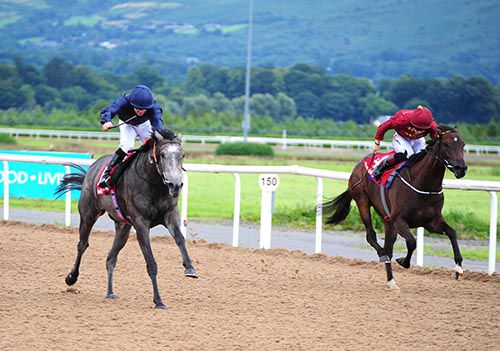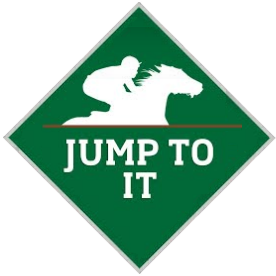
My Racing Story
Jim Martin
 Jim Martin CEO of Dundalk Stadium Healy Racing
Jim Martin CEO of Dundalk Stadium Healy Racing
© Photo Healy Racing
I was born and reared in Dundalk. I've lived in Ardee for the last 30 years which is only 12 or 13 miles away. I am an accountant by profession and my involvement with Dundalk started when I became a director of the old greyhound track in Dundalk upon the death of my father in 1978. My grandfather was a founder director of the original greyhound track in 1930. In the late 1990s, the old greyhound track and the old horse racing track were both in similar situations as they were in danger of closing because of lack of investment. Dundalk had come through the Troubles and it had been a tough time. The directors of both companies started talking to each other and wondered if we could perhaps combine resources and build something that would be a top-class facility for both sports.
Around that time I was Operations Director with Horseware Ireland, the horse rug company. We had a plant in Atlanta, Georgia and I had heard about a track in Birmingham, Alabama where both sports (horse racing and greyhound racing) were co-existing. I used to go out there for three weeks at a time and one weekend I decided to drive down to see what it was like. At that stage, the horse track had been built and it had closed but they had built a greyhound track which was functioning on the infield. It was a good distance on the infield. I came back and spoke to the directors and said this could actually work. At that time, Paschal Taggart was chairman of the Irish Greyhound Board and he had overseen the redevelopment of Shelbourne Park and Galway and Cork, and had seen crowds coming back to the sport with people going out for a night out. We spoke to him about our plans and we got great support.
The shareholders from both companies had to buy into it together with the Irish Greyhound Board and Horse Racing Ireland. At that time, the Irish Greyhound Board did buy into it but Horse Racing Ireland didn't buy into it. It made so much sense to us that we actually went ahead with the development and we got our architect to design for both sports but, without the support of horse racing, we could only build the greyhound track in Phase 1. Around 2002/2003 Horse Racing Ireland said they were going to build an all-weather track in Ireland and they set out the parameters - it needed to be a 10-furlong oval track, perfectly level. We said we could do that as we had the space to build it, so we got our architect to design a 10-furlong track and use the space that was there. When the greyhounds opened in November 2003, we had a good bit of success so we had the added advantage of proving that people would come out to it. There was a lot of negotiations, but eventually in late 2005/early 2006 Horse Racing Ireland agreed their support and their support was vital. We had to get an investor in to help us fund it, but it couldn't have happened without the grants we initially got from the Irish Greyhound Board and Horse Racing Ireland.
When we opened for horse racing in August 2007, we had 25 fixtures in the first year. We would finish at Christmas and open again in March. Then the Winter Series came in which meant there was 14 meetings on Friday nights and it has been a great success. It is a great asset to Irish racing. We have seen Colin Keane and Donnacha O'Brien, both future champion jockeys, riding their first winners at Dundalk. We have seen horses like Winter win their maiden at Dundalk (in August 2016) before going on to win the 1,000 Guineas at Newmarket and the Curragh (in 2017). Plenty of top horses have won their maidens at Dundalk and have gone on from that.
 DUNDALK 14 8 2016 WINTER and Wayne Lordan left win for trainer David Wachman
DUNDALK 14 8 2016 WINTER and Wayne Lordan left win for trainer David Wachman
© Photo Healy Racing
A lot of different people have come to use the facilities. We have seen a lot of celebrities - there was the day that Padraig Harrington and Shane Lowry were there and made a presentation for us. They really enjoyed the night out - they wanted a quiet night out with their friends at the end of the golf season. We want to continue to be the number one entertainment spot in the north-east. The bars and restaurants can be full on a winter night, but people weren't going to go out those nights to have a bet with the bookmakers so we decided to build an indoor betting ring. It added to the atmosphere and it means that people can access the bookmakers on nights where there is wind and rain. We want to work with Horse Racing Ireland to improve the quality of racing. We have a track record of consistently improving facilities and we intend to keep doing that. Recently, Racing TV used drone footage for the first time. To sit back and look at the footage from the drone kind of brings home how much the track has developed in the last 20 years.
The Polytrack surface was replaced at the start of Covid-19. We had pre-booked the surface to come from the UK and that work continued during covid. The surface has a lifespan which depends on how often it is used. We do annual testing of the surface and a lot of work goes into it. A lot of the old surface is on gallops all around the country. James McAuley who is successful in Dundalk trains his horses on some of the track that came out of Dundalk. He knows the horses will act on it anyway!
Horse Racing Ireland have been planning all-weather racing at Tipperary for a long time and the engineers and designers have been up to Dundalk, and we have shown them around. We have given them the benefit of our experience. Obviously, the feeling is that the horse population is going to grow and that there is going to be more demand for all-weather racing. When it is built, both tracks will operate alongside each other. With race planning, both tracks wouldn't be operating on the same evening. I do appreciate that if a trainer is in Cork or Kerry, it is a long journey up to Dundalk. Next year I think we have 41 fixtures and, if there is a need for more fixtures, we can certainly cope.
Personally, I love working in the racing industry. I may have come from the greyhound side, but I was a lifelong horse racing fan. The first time we went to Cheltenham was in 1979 and I saw Monksfield winning his second Champion Hurdle. My wife Laura keeps a few National Hunt broodmares. She bred The Posh Paddy that Barry Connell rode to win a Listed bumper at Cheltenham (in November 2003). I always had the interest in the horses and the greyhounds. Like any job it has its challenges, but the sport is full of great people, enthusiasm and optimists. It is a great sport to be involved in.
On 29th November, we are celebrating 20 years since the greyhound track opened. We think we have employed over 1,000 people over the 20 years because we run our own bars and restaurants - we have employed a lot of young people including students from DkIT and they are spread throughout the world now. It falls on a Wednesday and we have racing then, so we are going to have a celebration night and we are going to invite sponsors, people that have helped us and directors and staff who have been with us over the years. We are looking forward to that.

 Watch
Watch









